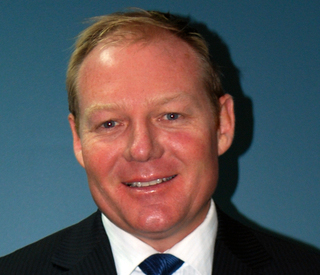Connecting The Public With Sailing- Darren Beazley
February 13, 2012
Another goal to broaden the appeal to a more mainstream audience is building the profile of superstars of world sailing. Most Australian sports lovers would know who John Bertrand is and Russell Coots is well known after last year’s America’s Cup. However, it is the new wave of talent in the sport that must begin to develop a profile. Sailing can follow the lead of international sports such as Formula One and establish, promote and link stars of the sport to the sailing enthusiasts and beyond. Ben Ainslie’s profile within Team GBR and the World Match Racing Tour has positioned him as a leading light of sailing, but too often great sailors have a very insular view and miss the ‘bigger picture’. Sailing administrators can do much to help, but ultimately the public want the sailors themselves to interact. With social media such a powerful link from sports stars to the fan base, now more than ever sailing must build heroes that are accessible and that want to engage with the public. 
Proximity is the ‘name of the game’ in sport. Bringing the general public closer to the action on the water is a far greater challenge than perhaps most would appreciate.
The term ‘Grandstand Sailing’ is not new and the Extreme 40’s have demonstrated what is possible to achieve in the right conditions. However, for an audience that is still discovering the sport, building the grandstands within metres of the bouys and finishing line is part of the solution. The live radio commentary must be provided so that people are able to comprehend what it is they are watching.
During Perth 2011, the athletes in the medal races were required to perform a ‘sail past’ in front of the grandstands pre and post race and are encouraged to engage. The crowd were able to consult the programmes with all of the information about their favourite athlete representing their country and has the benefit of listening to live descriptions of the racing and outcomes as they pertained to qualifying for London.
Whilst was a first for the ISAF World Championships, it must now become the standard at which sailing wherever possible is presented. Courses that do not allow themselves to be close to shore must have spectator boats that deliver the commentary and promotional materials to enhance the experience.
Finally, for sailing to engage with a broader audience, it is also important for the sport to broaden ‘the base’ and increase participation. It is widely known in sport that participation is the key to long term spectators and fans engaging with the sport. That is, by having an understanding and enjoyment of the sport, you are more likely to become a long term ‘fan’ and remain involved with the sport over longer period of time.
Sailing must continue to explain the fun and spectacular elements of the sport that make it attractive and invest back into programmes that will make access to boats easier and cost effective. Development programmes must look at growing the base not only for sailors of the future, but for the all important spectator group.
The sport of sailing continues to grapple with attempting to gain more interest and involvement from a broader audience than merely the sailing fraternity. From the “crash and bang” sailing of the Extreme 40s through to the grandstand excitement of the World Match Racing Tour, there is little doubt that sailing has the attention of the general public, but the challenge is now to maintain it.
About Darren Beazley:
Darren Beazley is the COO of the 2011 Perth World Championships, where he is responsible for all commercial aspects of the Olympic qualifying Event, including marketing and membership, licensing and merchandise, media and communications, sponsorship sales and events and innovation.
Darren arrived at Perth 2011 from Australian Rules football, where he worked for many years in both the football operations and commercial aspects of the game. He worked with the West Australia Football Commission from 1994 – 1998 and was then recruited by the AFL to be the General Manager of the Tasmanian Football Development Foundation, where he also served as Acting Chief Executive Officer.
After three years working with Funge Systems in the USA, he returned to Western Australia and was appointed General Manager, Business Development with the West Australian Cricket Association (WACA).
In February 2005, Darren was appointed General Manager – Strategic Partnerships for the Fremantle Football Club.
{jcomments on}


